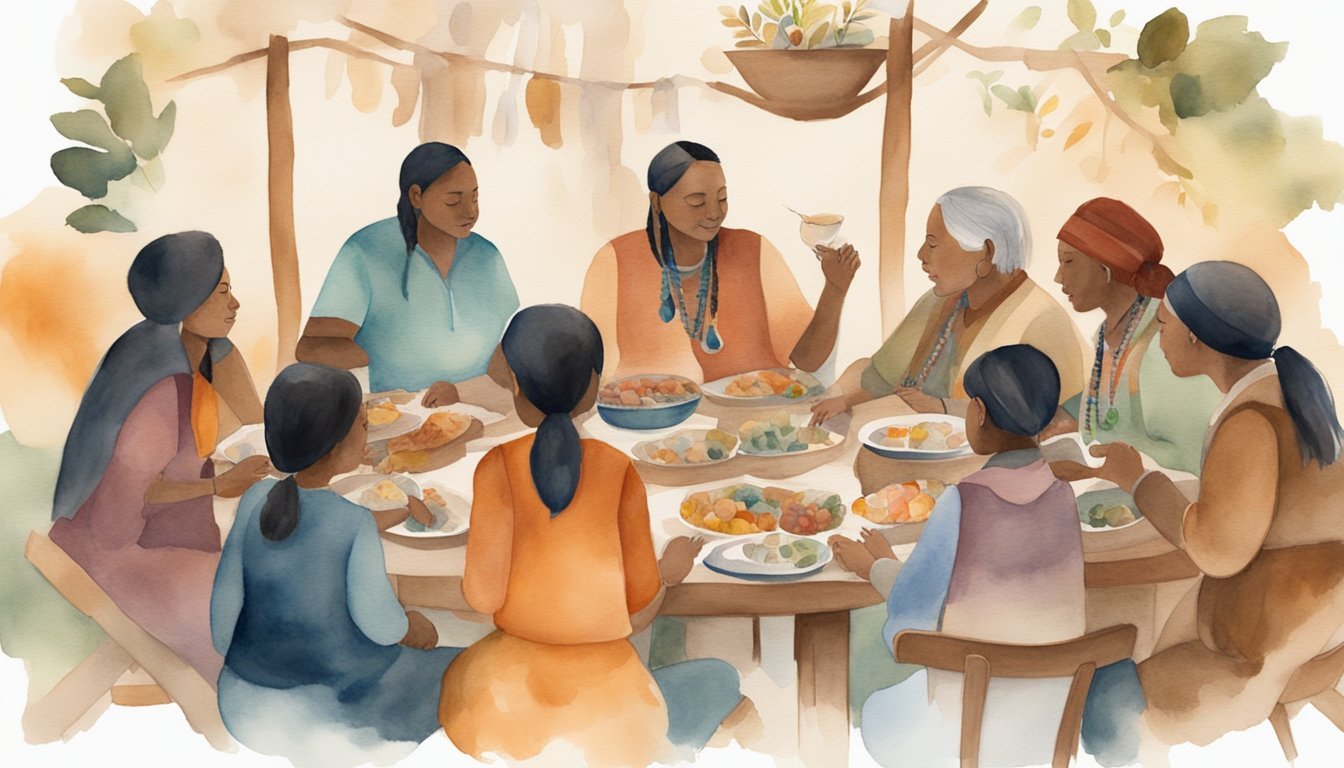Origins and Historical Context
Understanding the origins and historical context of Indigenous Peoples Day and Thanksgiving involves recognizing the complex history of pre-colonial societies, the interactions between Native Americans and European settlers, and the evolution of the myth surrounding the “First Thanksgiving.”
Pre-Colonial Indigenous Cultures
Before the arrival of European settlers, numerous diverse Native American tribes thrived on the land. These indigenous peoples had their own cultures, traditions, and systems of governance. Notably, the practice of giving thanks for the harvest was an established tradition among tribes, each with its own rituals.
The Wampanoag and the Pilgrims
In 1620, the Mayflower arrived at what is now Plymouth Colony, bringing with it a group of Pilgrims seeking a new life. They came into contact with the Wampanoag people, a tribe indigenous to the region, who were integral in teaching the settlers how to cultivate the land.
The Myth of the First Thanksgiving
The narrative of the “First Thanksgiving” often obscures the true history of the Wampanoag and other Native peoples. It simplifies the complex relationships between the Pilgrims and indigenous tribes and downplays the subsequent years of conflict, land displacement, and suffering. The National Day of Mourning, observed on Thanksgiving by many Native communities, serves as a reminder of this legacy and as a counter-narrative to the traditional Thanksgiving story.
Contemporary Celebrations and Observances

Throughout the United States, the traditional observance of Thanksgiving has evolved to recognize Indigenous perspectives and histories. This section explores how contemporary celebrations and observances reflect a shift towards acknowledging Native American culture and experiences.
Indigenous Peoples’ Day and Altering Perspectives
Indigenous Peoples’ Day, which coincides with the federal Columbus Day holiday, has been adopted by various states and cities as a day to honor Native Americans instead of celebrating the controversial arrival of European explorers. This day emphasizes the resilience and contributions of Native peoples, challenging the pilgrims and Indians narrative that has long overshadowed the complex histories of Indigenous communities. Many people choose to celebrate Thanksgiving within this evolving context, focusing on inclusivity and Native American heritage.
National Day of Mourning
The National Day of Mourning is observed by some Indigenous groups, notably the United American Indians of New England, on Thanksgiving Day. It serves as a time to remember the suffering of Native ancestors and the injustices they faced. In Plymouth, Massachusetts, participants gather annually on Cole’s Hill, near the iconic Plymouth Rock, to reflect on history and advocate for equity and justice.
Education and Awareness Efforts
Efforts are increasing to educate the public about the diverse cultures and historical experiences of Native Americans through the recognition of November as Native American Heritage Month. Educators and organizations are advocating for a more accurate representation of Thanksgiving, encouraging understanding of Native traditions around gratitude and community. Cooking classes and educational programs often highlight indigenous foods that would have been part of the original harvest feast. The Friday following Thanksgiving has been recognized as Native American Heritage Day, further encouraging reflection on the rich and diverse cultures of Native peoples.

